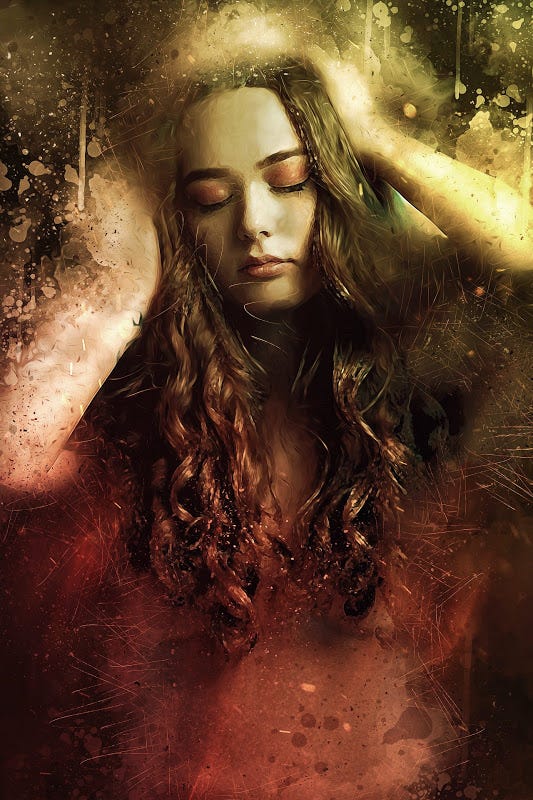Yes, surrealism and transcendence have influenced the subconscious world of reality.

The world beyond consciousness is blissful and enchanting. It has high spiritual enlightenment and artistic experiences that are projected through music, art, theories, and philosophies.
Two of these experiences lie in the subconsciousness of perception that deals with the intellectual and imaginative potential of the human mind.
These are the experiences of surrealism and transcendence that have been advocated through the ages by artists and philosophers. Besides, they also believed in the existential nature of spirituality and imagination beyond space and time.
For instance, Salvador Dali and Frida Kahlo were one of the greatest artists who believed in surrealism. On the other hand, philosophers like Jean-Paul Sartre and Immanuel Kant believed in transcendence.
(However, many theories are still debatable, and we need to explore them on a deeper level of human understanding.)
It doesn’t mean that the artists and philosophers are different from the rest. However, it is just a state beyond consciousness where one believes to be at his best. Moreover, they also embrace the true beauty of the underlying meanings behind various ideas.
So, let us dive deep into the intellectual and imaginative aspects of existence.
The unparalleled potential of the ‘aesthetic realm of surrealism’ concerning transcendence:
The surrealist movement resides and projects itself in the form of visual images of art and music. However, these images or rather ‘figures and abstracts’ do not necessarily adhere to the logical aspects of art.
So, “what is surrealism?”
By definition,
It is an artistic movement or aesthetic philosophy that aims for the liberation of the mind by emphasizing the critical and imaginative powers of the subconscious.
In other words, we can assume it as an apex category. Most importantly, a state where a person embraces the ‘unique aspects of aesthetic philosophy through imaginative prowess.’

Likewise, the powers of imagination in the form of surrealism are uncanny. Therefore, it is experienced by people who strive to attain it. However, its existence remains unknown, and its effects on human psychology are still a mystery.
Surrealism is divided into two forms of art based upon the abstracts and figures, namely:
- Figurative Surrealism
- Abstract Surrealism
Figurative surrealism is a form of surrealist art that represents itself through ‘human or animal figures and visual images’ beyond the logical aspects of art.
Abstract surrealism is a form of surrealism that represents itself as ‘patterns and abstractions of human emotions and feelings’ beyond consciousness.
Above all, the two forms of surrealism give us a glimpse of the creative and artistic masterpieces. As a result, artists like Frida Kahlo, Pablo Picasso, and Salvador Dali have influenced society with their surrealistic artworks.
Besides, there have been instances where people regard this high state as a feeling or emotion. Further, they claim to rise beyond human constraints and expectations. To clarify, it is somewhat similar to the concept of transcendence.
The ultimate potential of ‘philosophical transcendence’ concerning surrealism:
Transcendence is a state that can only be perceived when an individual understands his relation to self and society. Besides, this idea focuses on the existence of a higher spiritual state beyond consciousness.
So, “what exactly is transcendence?”
By definition,
It is the state of being beyond the range of normal perception.
To sum up, the intellectual capabilities of the human mind are far greater than we ever imagined. Consequently, we realized the truth about the ‘apex state of enlightenment’ and its effects on human experiences.

Concerning the Enlightenment, this idea preaches the existence of three aspects of transcendence, namely:
- Ego Transcendence
- Self Transcendence
- Spiritual Transcendence
Firstly, ego transcendence is a state where an individual differentiates between his ego and his true self. As a result, the true self becomes his identity, and his ego expresses the inner universe to the objective reality.
Secondly, self-transcendence is a state where an individual rises past his inner universe. As a result, he understands the significance of his existence concerning the vast nature of the universe.
Moreover, spiritual transcendence is a state where an individual ascends beyond time and space. As a result, he is enlightened on a subconscious level to become one with the dynamics of the universe.
To clarify, the three forms of transcendence guide us to a path of spiritual and intellectual ascension. Besides, it is also relevant in various religions across the world. Hence, philosophers like Jean-Paul Sartre and Immanuel Kant have influenced society with transcendental philosophies for years.
But, “If both the definitions are similar, wouldn’t they be related to each other?”
So, let’s find out about the union of surrealism and transcendence and see whether they are related or not.
The union of ‘imaginative and intellectual’ purpose of surrealism and transcendence:
While transcendence and surrealism may not be the same, yet they share similarities in the ideologies and beliefs. Therefore, a person can attain the highest state by achieving liberation or freedom from human constraints.
So, this raises the question, “Are transcendence and surrealism related to each other? In other words, is it just the differences concerning the path towards a single purpose?”
Yes, their ways are different, but their goal is the same. To sum up, it is similar to two lines meeting at the same point. Hence, ‘the distinct approaches do not account for distinct ends.’
Moreover, transcendence shares a ‘gnostic’ relation with surrealism. But, it can only be understood if one uncovers the deepest layers of psychology with the help of human philosophy.

Meanwhile, both science and art are the two branches of philosophy that express life symbolically. As a result, this philosophy validates the existence of transcendence while aesthetic philosophy validates the existence of surrealism.
Likewise, both convey the existence of an intellectual state which is assumed to be unique and original, since nobody has ever been able to reveal the state at which one experiences them.
Hence, two of the similarities between them are the unknown experiences one gains upon realizing these states and the existence of these experiences, which is responsible for originality and uniqueness in the psychological realm.
Above all, no one can reach these states and can only experience them. Besides, these experiences vary with individuals.

Final Words:
In conclusion, the above conceptions form the basic understanding of the richness of human experiences and a broad expanse of psychology at its best.
Consequently, both transcendence and surrealism share a deep relation. Therefore, it can be understood on common grounds to provide humanity with new meaning and purpose.
Moreover, it is necessary for the rejuvenation of our experiences, where a creative approach would light a path towards the hidden facts of the subconscious mind.
Pingback: Stendhal Syndrome: The Truth About The Toxicity Of Art | Rana Heals